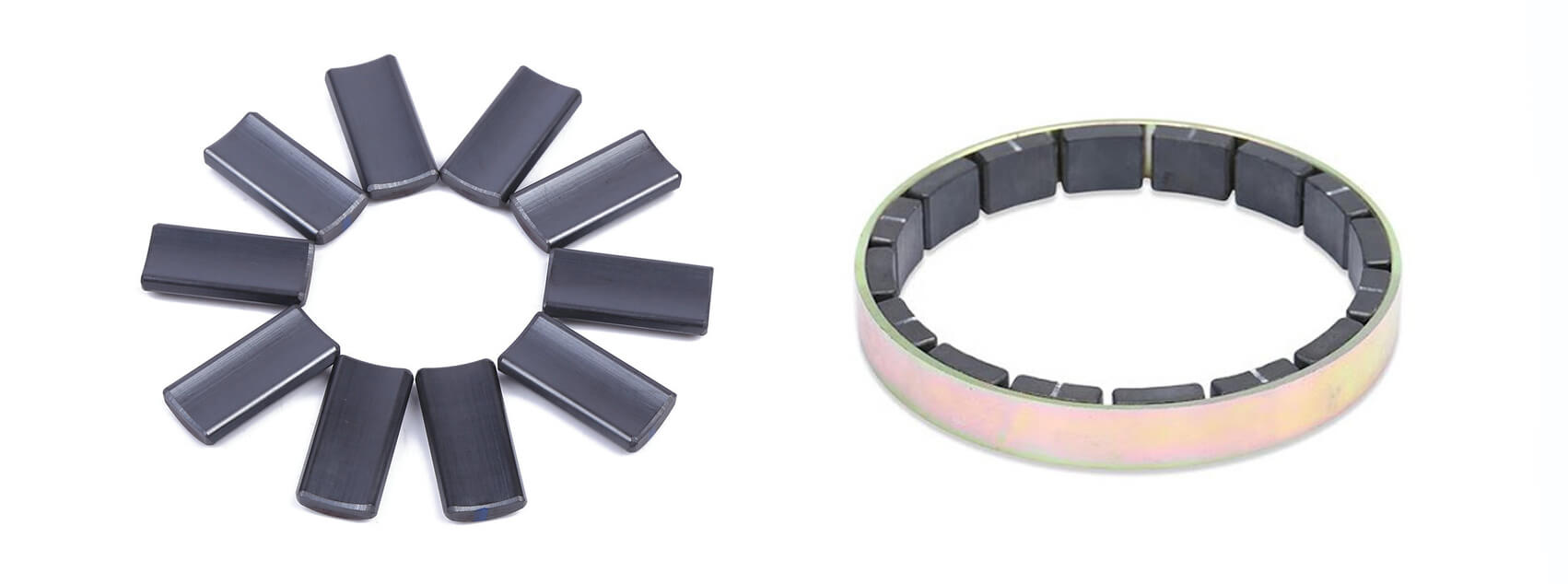Ceramic magnets are fabricated by calcining the mixture of Barium carbonate (BaCO3) or Strontium carbonate (SrCO3) and iron oxide (Fe2O3) to form a metallic oxide. Almost all of the ceramic arc magnets are provided for motor applications. As the core component of the permanent magnet direct current (DC) motor, ceramic arc magnet is conventionally served to the motors of household electrical appliance, automotive, and power tools. Ceramic magnets have excellent temperature stability which can be utilized up to 250 degrees Celsius besides superior corrosion resistance.

Machining Process of Ceramic Arc Magnet
As its name implies, ceramic magnet is a kind of porous insulating material which composed of many grains and pores. Ceramic magnet is almost not even possible near net-shape manufacturing, then undergo a certain machining process is inevitable. As a hard and brittle material, ceramic magnet can be only processed by grinding, slicing, and polishing technology to achieve specified dimensional accuracy, geometric tolerance, and roughness. The most common shape of the ceramic magnet includes block, disc, ring, and segment, then magnet manufacturer must select suitable machining technology according to product requirements. Unlike Neodymium arc magnet or SmCo arc magnet which possesses good conductivity, wire-cutting process is not applicable to ceramic magnet, therefore, its machining is basically completed through copy grinding technology.
